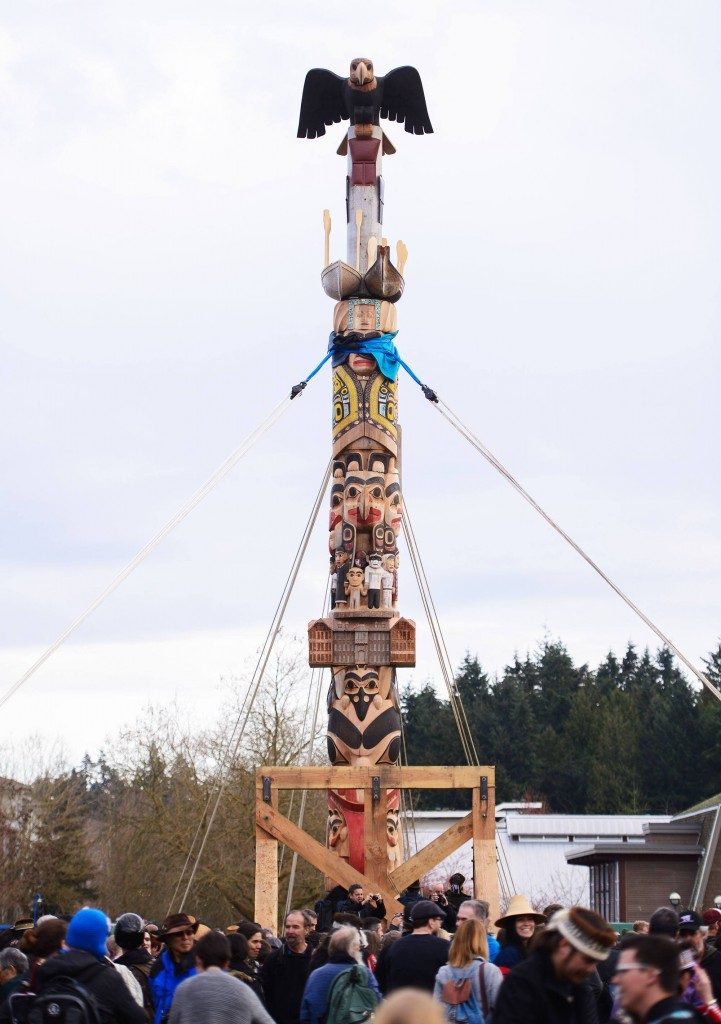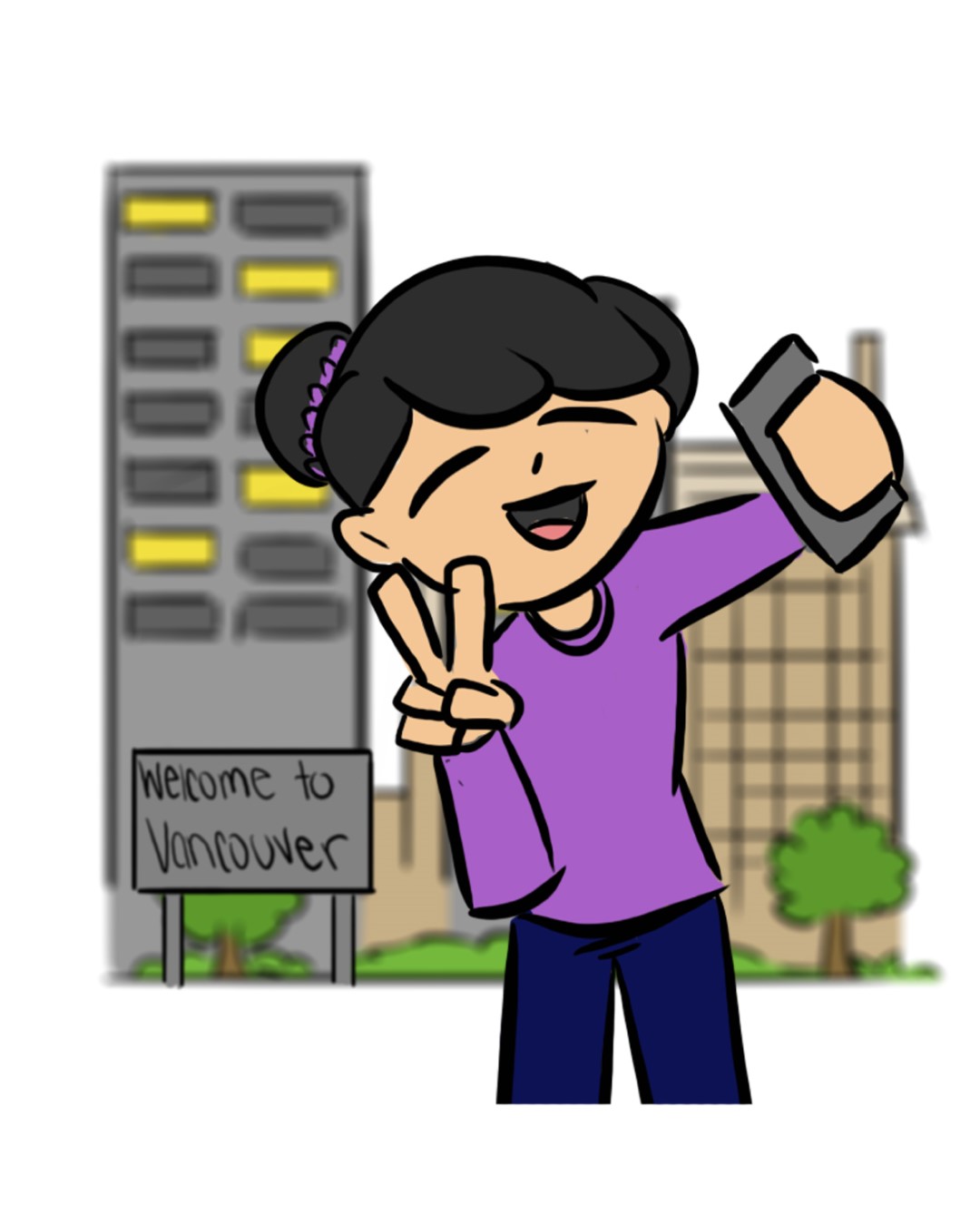
Reconciliation pole raised at UBC
By Mercedes Deutscher, News Editor
On April 1, a long anticipated totem pole was raised near UBC—a totem pole made to immortalize the memory and experiences of Indigenous children who lived through the residential school experience.
Hundreds gathered to see the 17-metre pole—carved by Haida chief and master carver James Hart—which was brought up in the traditional style, accompanied by stories from residential school survivors. The pole was made from an 800-year old cedar tree.
“The schools were terrible places. Working on the pole has been difficult, but I have loved it too. We need to pay attention to the past and work together on a brighter future,” Hart said to the Vancouver Sun.
At the base, copper nails are formed in the shape of two skeletons.
The pole tells the story of Canada’s Indigenous peoples in three parts. The bottom part of the story represents life before the residential schools with symbols of salmon, a bear, and a raven.
The middle of the pole, fashioned after the traditional residential schoolhouse, represents the sorrowful time of these institutions. There are thousands of copper nails in the pole, each one representing a residential school student who lost their life during the years of Canada’s darkest history.
The top of the pole tells of the post-residential school experience. Children, carved to represent various nationalities of Indigenous Peoples, stand above the school. One child is left unfinished, to represent the children who never came home from the schools. Families are brought together, and an eagle and spirits remain to care for and protect affected generations.
All of the copper nails that have been placed in the pole have been hammered in by residential school survivors, as well as children and volunteers.
“It’s really to bring attention to the destruction [residential schools] brought forth and the effects that we’re living with today,” Hart said to CBC.
“It’s part of a celebration that says ‘I’m still here, we’re still here.’ We weren’t beaten down to the point where we became non-existent,” said Elder Barney Williams to Global News.
Williams shared his story during the pole raising ceremony. He attended a residential school on Meares Island, BC, where he faced a traumatic history of physical and sexual assault.
Prior to the pole raising ceremony, Hart spoke to the Vancouver Sun about the many significances of the pole. He spoke of reconciliation, and even though recognizing the atrocities of residential school is important, it is just as important to always remember those who lived and died during the experience.
“It’s about understanding and moving forward together. We want to be part of Canada. We have lots to offer,” Hart had said to the Vancouver Sun. “Every nation has been here for thousands of years. We’re part of the country. Really, we want to be part of Canada, but not the destructive part.”


